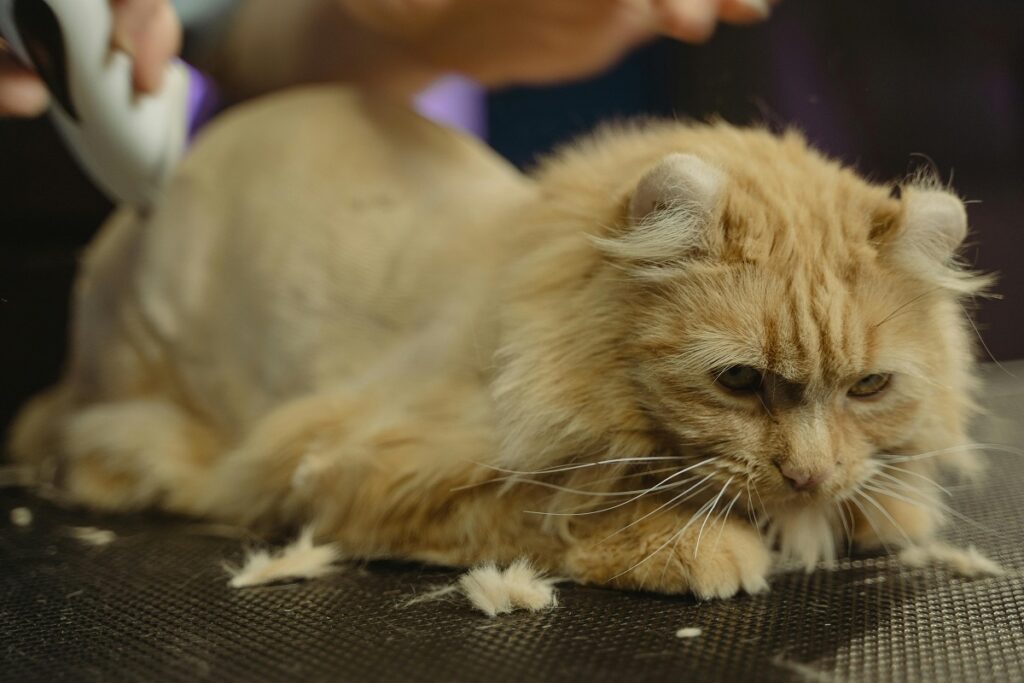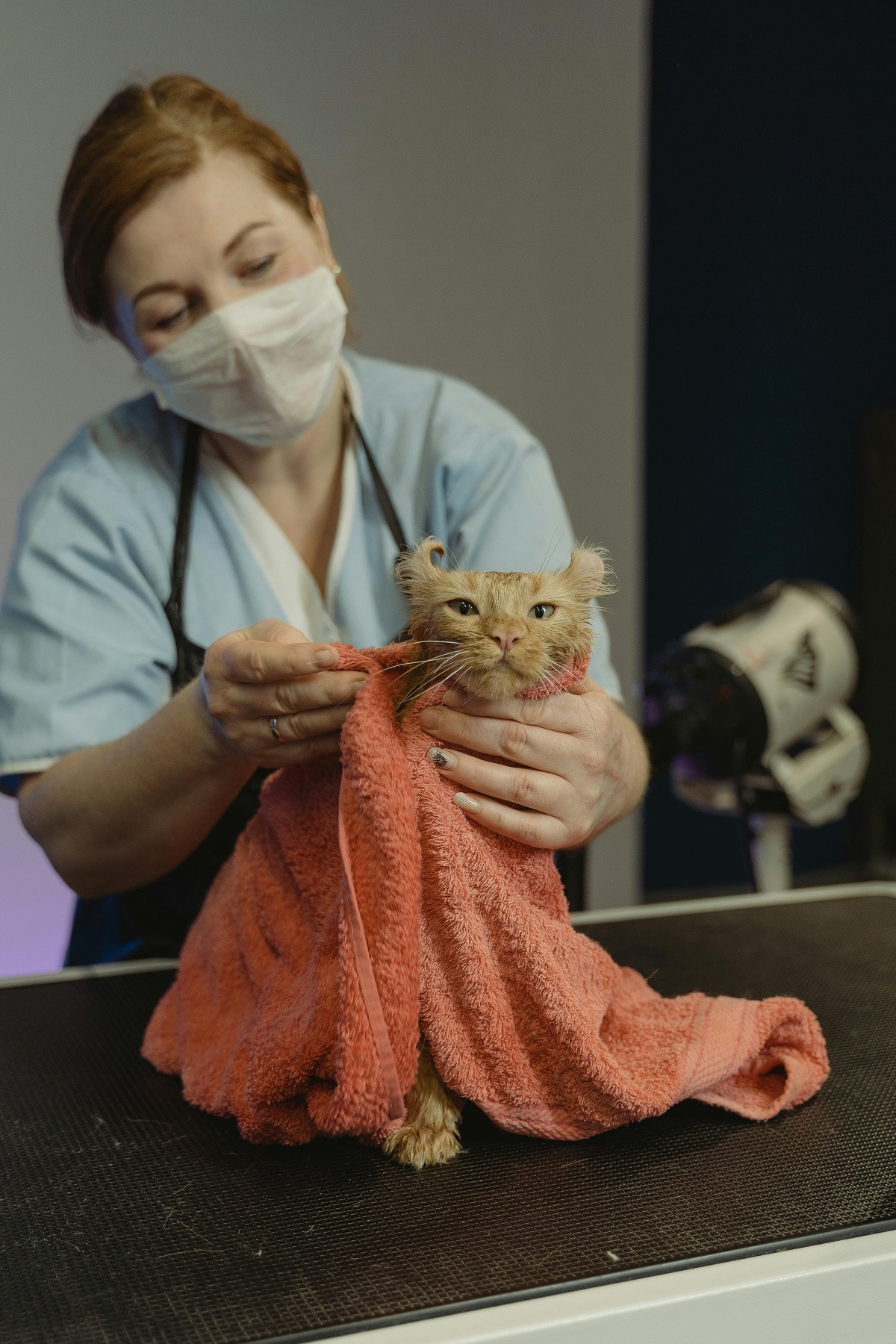Grooming your pet at home can be a rewarding experience that strengthens your bond while keeping your furry friend clean and healthy. Proper grooming involves more than just brushing and bathing it includes nail trimming, ear cleaning, and dental care. Follow this comprehensive guide to ensure your pet looks and feels its best.
Benefits of DIY Pet Grooming
Strengthens Bonding Grooming sessions can be a great way to build trust and companionship with your pet.
Saves Money Professional grooming can be expensive, and DIY grooming can reduce costs significantly.
Monitors Pet Health Regular grooming allows you to check for signs of skin infections, parasites, or any abnormal lumps.
Reduces Shedding Brushing and proper coat care can help minimize excessive shedding in your home.
Enhances Appearance A well-groomed pet looks and feels great, improving their overall well-being.
Essential Grooming Supplies
Before you start, gather the necessary supplies:
Brushes and Combs – Choose the right brush depending on your pet’s coat type (slicker brush, bristle brush, or de-shedding tool).
Shampoo and Conditioner – Use pet-friendly, hypoallergenic products to avoid skin irritation.
Nail Clippers or Grinder – Keep nails trimmed to prevent discomfort and injuries.
Ear Cleaner and Cotton Pads – Regular ear cleaning helps prevent infections.
Toothbrush and Pet-safe Toothpaste – Maintain good oral hygiene to prevent dental diseases.
Towels and Blow Dryer – Dry your pet properly after bathing to prevent skin issues.
Deshedding Tools – Helps with managing seasonal shedding, especially in double-coated breeds.
Styling Scissors – Useful for trimming fur around sensitive areas like the face and paws.
Step-by-Step Grooming Routine

Brushing Your Pet’s Coat
Regular brushing removes loose fur, and dirt, and prevents matting.
Short-haired pets – Use a bristle brush or rubber mitt.
Long-haired pets – Use a slicker brush to detangle fur before using a comb.
Double-coated breeds – A deshedding tool helps remove undercoat fur.
Tip: Brush your pet before and after baths to keep their coat in top shape.
Bathing Your Pet
Step 1: Wet your pet’s coat thoroughly with lukewarm water.
Step 2: Apply pet-friendly shampoo and massage gently to lather.
Step 3: Rinse thoroughly to remove all shampoo residue.
Step 4: Apply conditioner if needed and rinse again.
Step 5: Towel-dry and use a blow dryer in a low heat setting if your pet is comfortable.
How Often?
Dogs: Every 4-6 weeks (depending on breed and lifestyle).
Cats: Only when necessary, as they self-groom.
Trimming Nails
Long nails can cause discomfort and mobility issues.
Use a pet nail clipper or grinder.
Trim small sections at a time to avoid cutting the quick (the sensitive part inside the nail).
Reward your pet with treats for staying calm.
Cleaning Ears
Dampen a cotton pad with an ear cleaner.
Gently wipe the outer ear, avoiding deep insertion.
If you notice redness, a bad smell, or excessive wax, consult a vet.
Dental Care
Dental health is crucial for preventing bad breath and gum disease.
Use a pet-specific toothbrush and toothpaste.
Gently brush in circular motions.
Start slow and gradually make brushing a routine.
Advanced Grooming Techniques
Trimming and Styling
Use pet-safe styling scissors to trim excess fur around paws, ears, and eyes.
Clip hair in the direction of growth to prevent irritation.
If using electric clippers, keep the blade cool to avoid burns.
Dealing with Matted Fur
Use a detangling spray before brushing.
Carefully cut out stubborn mats if they cannot be brushed out.
Seek professional help if the matting is severe.
Managing Seasonal Shedding
Increase brushing frequency during shedding seasons.
Consider adding Omega-3 supplements to your pet’s diet for healthier fur.
Regular baths with de shedding shampoo can help manage loose fur.
Handling Nervous Pets
Introduce grooming tools gradually.
Use soothing music or treats to help them relax.
Keep grooming sessions short and positive.
Breed-Specific Grooming Advice
Small Breeds (e.g., Shih Tzu, Yorkshire Terrier)
Brush daily to prevent tangles and matting.
Trim hair around the eyes to prevent irritation.
Use a mild shampoo suitable for delicate skin.
Large Breeds (e.g., Golden Retriever, Labrador Retriever)
Brush at least three times a week to manage shedding.
Ensure thorough drying after baths to prevent skin infections.
Regularly check ears for infections, especially in floppy-eared breeds.
Short-Haired Breeds (e.g., Beagle, Boxer)
Use a rubber grooming mitt to remove loose hair.
Bathe sparingly to maintain natural skin oils.
Wipe with a damp cloth between baths to keep the coat fresh.
Long-Haired Breeds (e.g., Afghan Hound, Collie)
Invest in a high-quality slicker brush and comb.
Use a detangling spray before brushing.
Schedule deep grooming sessions weekly to prevent severe matting.
Double-Coated Breeds (e.g., Husky, German Shepherd)
Brush daily during shedding season.
Avoid shaving the undercoat, as it helps regulate body temperature.
Use a high-velocity dryer to remove loose fur after baths.
Short-Nosed Breeds (e.g., Pug, Bulldog)
Clean facial folds regularly to prevent infections.
Use a damp cloth to wipe tear stains.
Avoid over-bathing to prevent skin dryness.
Tips for a Stress-Free Grooming Experience
Start grooming when your pet is relaxed.
Use positive reinforcement (treats, praise, and gentle petting).
Take breaks if your pet becomes anxious.
Gradually introduce new grooming tools to avoid fear.
Establish a routine so your pet gets accustomed to grooming.
When to Seek Professional Help
While DIY grooming is great, some situations require professional care:
Severe matting or tangled fur.
Aggressive behavior during grooming.
Skin infections, fleas, or ticks.
Specialized cuts (e.g., poodle trims, show dog styles).
Medical conditions requiring special grooming techniques.
Final Thoughts
Regular DIY grooming keeps your pet clean, comfortable, and healthy. By following these steps, you can create a stress-free grooming routine at home while ensuring your pet enjoys the process. Grooming is not just about appearance—it plays a crucial role in your pet’s overall health and happiness.
With patience and consistency, you can become confident in grooming your pet at home. Always be gentle, reward positive behavior, and seek professional assistance when necessary. Happy grooming!

